Limewash has been used for centuries as a breathable, protective finish for plaster, stone, and wood. It’s known for its unique, weathered look and inherent durability. But what happens when you want to change up your aesthetic? Can you paint over limewash? This question might have crossed your mind if you are considering a color change or a different finish for your space. In this article, we will explore the complexities and considerations when it comes to painting over limewash.
Can You Paint Over Limewash?
Certainly! While it is possible to paint over limewash, there are a few considerations to keep in mind. Limewash is porous, meaning it absorbs and releases moisture; hence, it’s vital to use a breathable paint to avoid trapping moisture. Additionally, the alkaline nature of limewash may affect some paints, so it’s recommended to use a primer first. This process properly preps the wall for the fresh paint, guaranteeing improved adhesion and long-lasting vibrancy of the new color.
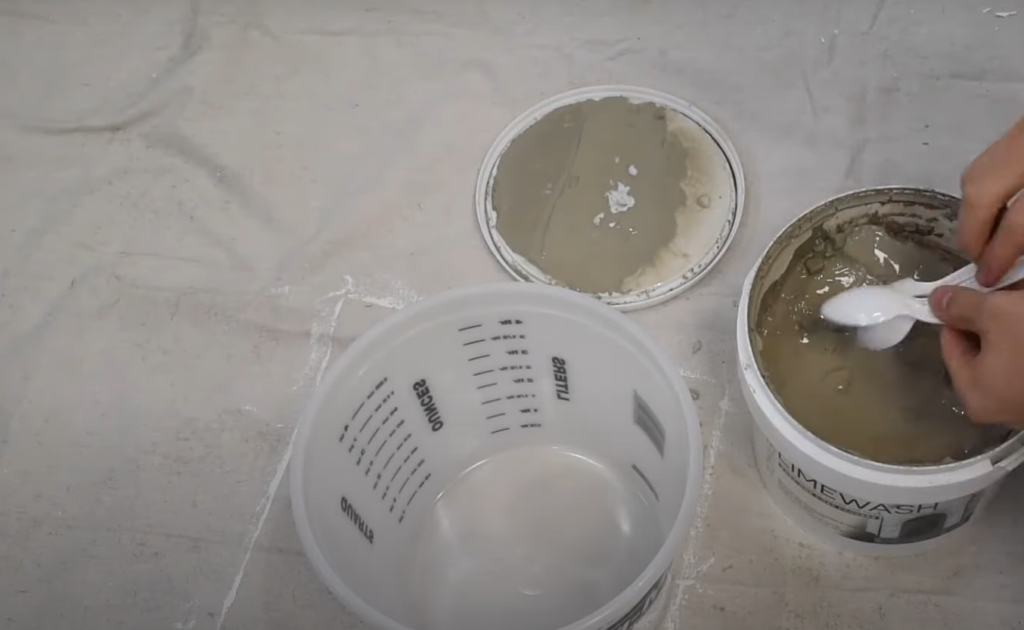
It is important to be aware that painting over limewash will result in the loss of its distinctive ‘bloom’ and its ability to naturally repair minor cracks. Therefore, while it’s possible to paint over limewash, it’s crucial to weigh up the pros and cons and consider the impact on both the aesthetic and durability of your walls.
How Does Limewash Affect Normal Paint?
Limewash’s natural composition creates a unique interaction when normal paint is applied over it. Its porous nature, as mentioned earlier, can affect the adhesion of regular paints that aren’t designed to be breathable. This could result in peeling or blistering of the paint layer over time as moisture from the underlying limewash tries to escape. Furthermore, limewash’s highly alkaline attributes can lead to a reaction with certain types of paint, potentially causing discoloration or weakening the paint’s binding ability. Consequently, it’s essential to use a suitable primer that can interact favorably with both the limewash and the new paint. Note, however, that any applied paint will completely cover the limewash, negating its unique aesthetic effects and some of its practical benefits like the ability to self-heal minor cracks. [1]
What Primer to Use over Limewash?
When painting over limewash, it’s crucial to choose a primer that’s compatible with both the limewash and your chosen paint. A good option is a high-quality, acrylic-based primer. These primers are known for their excellent adhesion, breathable properties, and resistance to alkaline surfaces like limewash. Consider a product such as the Sherwin-Williams Loxon Conditioner, which is designed for masonry and can work well with lime washed walls. Its breathable finish will allow moisture from the limewash to evaporate, preventing paint failure. However, it’s always recommended to consult with a paint professional or the paint manufacturer directly when making your decision.
How to Paint over Limewash?
Painting over limewash involves several key steps to ensure a successful and lasting finish.
Clean the Surface
Prior to commencing the painting process, it is of utmost importance to meticulously cleanse the surface that has been limewashed. Gently brush the wall using a soft bristle brush to effectively remove any loose debris or dust.
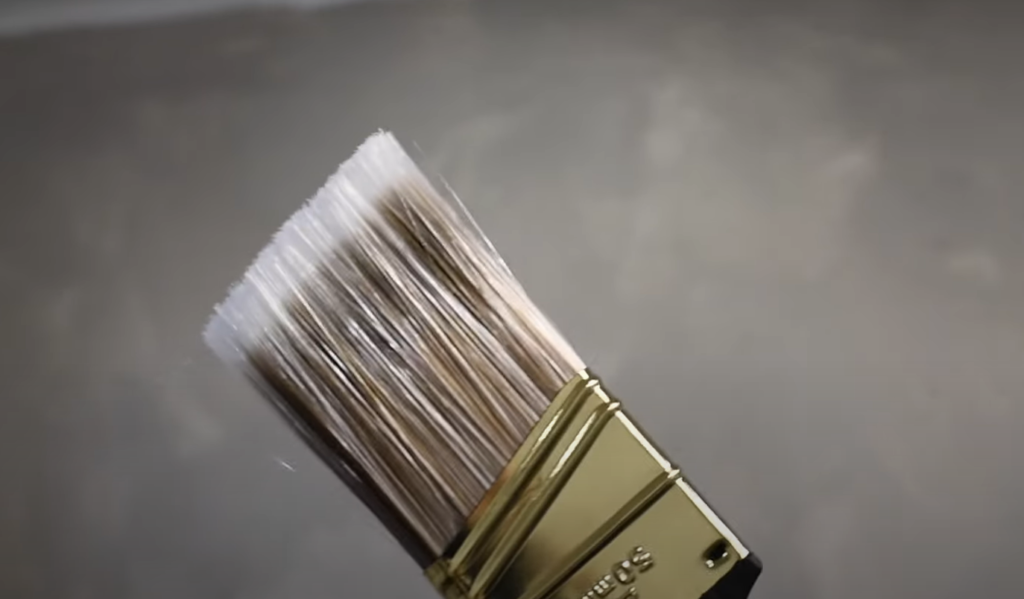
Next, gently cleanse the wall using a solution of mild detergent. Rinse with clean water and let it dry completely. This step is crucial to ensure proper adherence of the new paint to the limewash. If there are any stubborn stains, consider using a mildew-resistant product to clean the surface. Always remember to wear appropriate protective equipment, like gloves and eye protection, when cleaning surfaces. [2]
Protect Surrounding Areas
Before you start the painting process, it’s important to protect the surrounding areas from paint drips or splatters. Cover the floor and nearby furniture with drop cloths or plastic sheeting. Use painter’s tape to protect windows, door frames, and other adjacent surfaces that you don’t want to be painted. Taking these precautions will make the clean-up process easier and prevent any unintended damage to your property.
Sand the Surface
After cleaning and protecting surrounding areas, the next step is to lightly sand the limewashed surface. Utilize a fine-grit sandpaper to effortlessly refine any uneven areas and establish a subtly textured surface that allows the primer and paint to adhere with utmost effectiveness. Make sure to wipe away any dust from sanding before proceeding to the next step.
Remember to wear a dust mask and protective eyewear during this process to protect yourself from dust particles. [3]Apply Primer
After preparing the surface, it’s time to apply the primer. Shake or stir your chosen primer well before use. Using a good quality brush or roller, apply a uniform layer of the primer over the entire limewashed surface. Be sure to work in sections, maintaining a ‘wet edge’ to avoid visible lines between the sections when it dries. Allow the primer to dry thoroughly according to the manufacturer’s instructions, typically 24 hours.
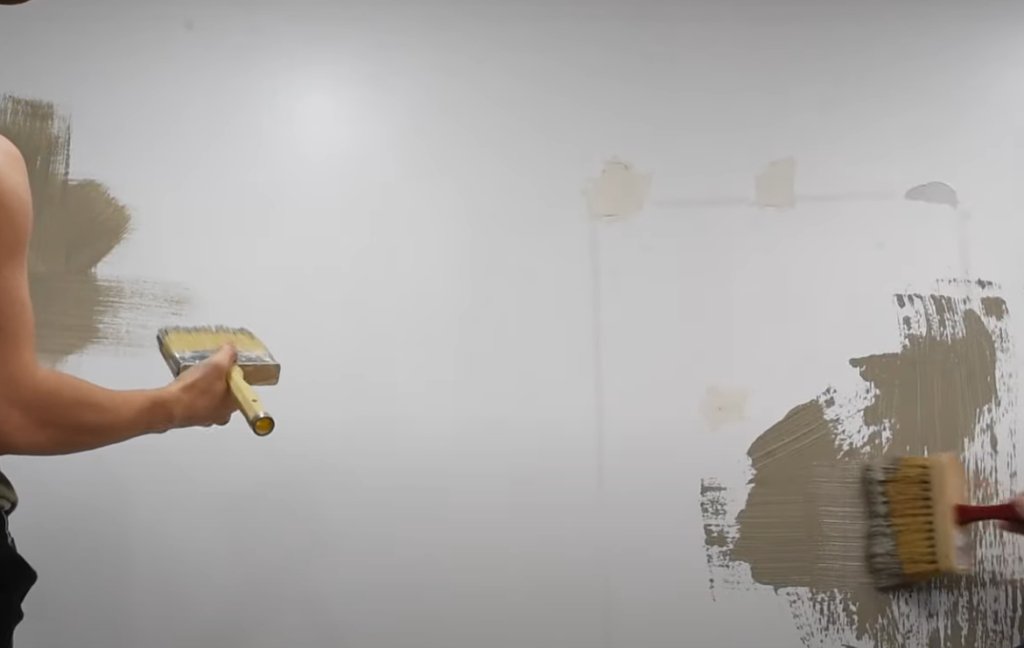
Taking the time for this process is crucial, as the primer must fully dry before applying the paint. Applying a layer of primer provides a crucial link between the limewash and the new paint, guaranteeing excellent adhesion and durability for your paint job. Always remember to clean your brushes and rollers after use to keep them in good condition for the next step, which is applying the paint.
Paint the Surface
After the primer has thoroughly dried, you can now proceed to paint over the limewash. Begin by shaking or stirring your chosen paint well before use. Use a clean brush or roller to apply the paint in smooth, overlapping strokes. Start from the top of the surface and work your way downwards to help catch any drips. Remember to maintain a ‘wet edge’ to prevent visible lines between the sections. For desired coverage and finish, multiple coats may be needed based on paint color and type. Always let the paint fully dry between coats, as recommended by the manufacturer. Once you are happy with the coverage and appearance, allow the paint sufficient drying time. Once dry, carefully remove any painter’s tape and protective coverings. Congratulations, you’ve successfully painted over limewash! Remember to clean all your painting tools after use and store them properly to keep them in good condition for future use. [4]
Can You Paint over Limewash with Emulsion?
Yes, you can paint over limewash with emulsion, but it requires careful preparation for a successful result. Emulsion is water-based paint, and while this makes it breathable – a desirable trait when dealing with limewash – it can also pose challenges. Before painting, it’s vital to thoroughly clean and dry the limewashed surface as outlined in the steps above. You must also lightly sand the limewashed surface to improve the adhesion of the emulsion.
Using a suitable primer before applying emulsion paint is crucial. The primer should be compatible with both the limewash and the emulsion, ideally an acrylic-based primer. It creates a bondable surface for the emulsion paint and helps to seal the lime wash underneath.
Lastly, apply multiple coats of your chosen paint, ensuring sufficient drying time between each layer as recommended by the manufacturer. This will ensure a flawless and uniform outcome. Despite the extra effort, the final result will be a refreshed space with the resilient characteristics of limewash preserved beneath the new color of your choice.
Can You Paint over Limewash Brick?
Yes, you can paint over limewashed brick. However, thorough preparation is crucial for a durable outcome. Prior to painting, the limewashed brick should be thoroughly cleaned and any loose debris or dust should be removed. Afterward, it is recommended to apply an appropriate primer to create a foundation for the paint to adhere to effectively.
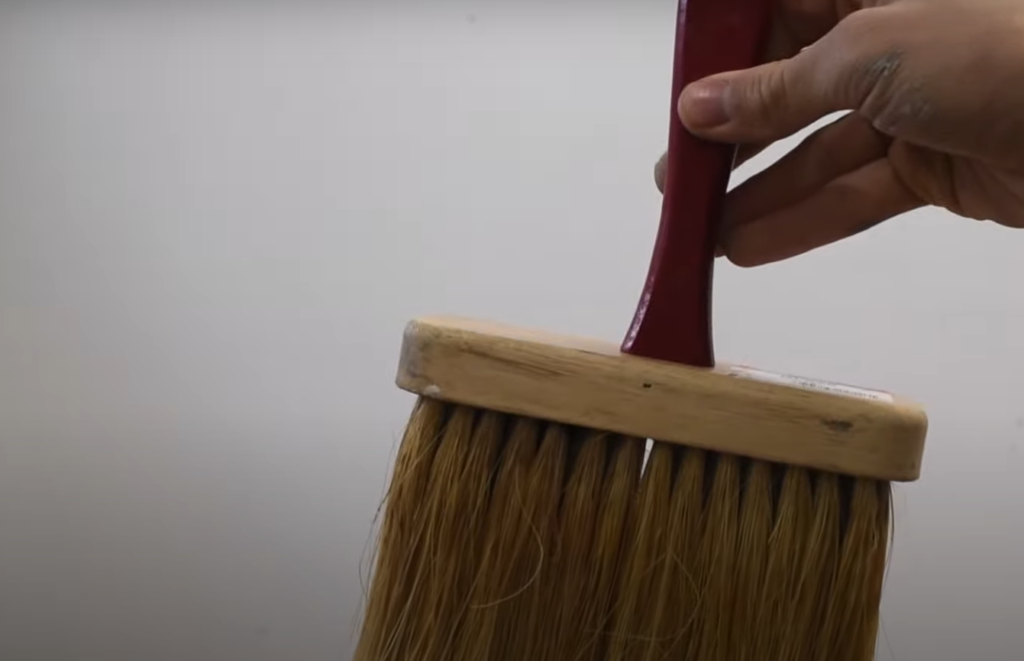
This step is particularly critical when dealing with bricks as they tend to absorb paint, which can lead to an uneven finish. Once the primer has fully dried, usually within 24 hours, you are ready to apply your selected paint. You can use either a brush or a roller for this step. Depending on the brick’s texture and paint type, multiple coats may be needed.
In conclusion, although painting over limewashed brick can be a time-consuming process, with meticulous preparation and patience, it can yield a stunning and long-lasting outcome.Can You Paint over Limewash Render?
Certainly! It is indeed possible to apply a new coat of paint over limewash render. However, just like any other surface, it requires meticulous preparation to achieve a satisfactory and long-lasting finish. First and foremost, it is crucial to thoroughly clean the limewash render to eliminate any dust or loose debris. Next, gently sand the surface to create an appropriate texture that allows the paint to adhere effectively. Applying a high-quality primer is the next crucial step. The primer serves the purpose of sealing the limewash and establishing a seamlessly bondable surface for the paint, ensuring a smooth application. Select a primer that is compatible with both the limewash and the paint you have chosen. Once the primer is completely dry, you can start painting. Apply your selected paint using smooth and even strokes, starting from the top and working your way down. Make sure to allow each coat to fully dry before applying the next one. To achieve the desired coverage and finish, multiple coats may be necessary. In conclusion, with proper preparation, you can successfully paint over limewash render, achieving a fresh and durable result. [5]
FAQ
Can you put primer over limewash?
Indeed, you can put primer over limewash. In fact, it’s a vital step in the process if you plan on painting over lime washed surfaces.
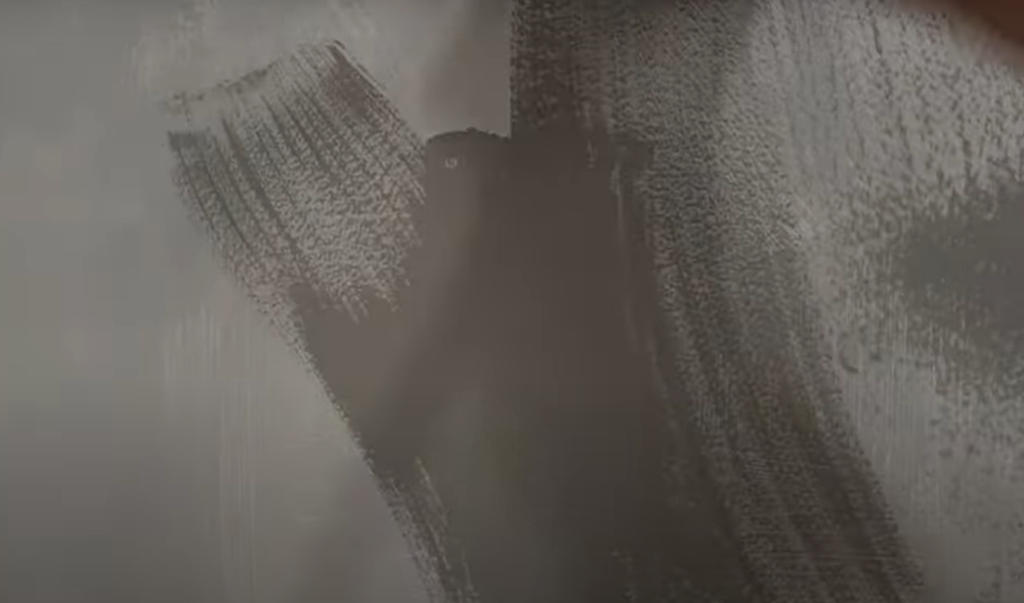
The primer acts as a bridge between the limewash and the following paint layers, creating a surface that promotes adhesion and durability of the new paint job. Before applying paint, it is crucial to ensure that the primer is completely dry.
Using primer over limewash helps achieve a smooth, even, and long-lasting finish.Can limewash paint be removed?
Yes, limewash paint can be removed if desired. The process involves the use of a pressure washer or a stiff bristle brush along with plenty of water. It’s vital to note that while removing lime wash is possible, it can be labor-intensive and time-consuming, especially for larger surfaces. The amount of effort required will largely depend on the thickness of the limewash and the nature of the underlying surface. Always remember to take appropriate safety precautions when undertaking this task. It is recommended to test a small area first to gauge the ease or difficulty of removal before proceeding with the entire surface.
Can you change the color of limewash?
Yes, you can change the color of limewash. Limewash is a versatile material that can be tinted with natural pigments to achieve a wide range of hues. If you wish to change the color of an existing limewash, you can apply a new layer of tinted limewash over the old one. The new limewash should be mixed with the desired pigment and applied following the standard application procedures. Be sure to test the new color on a small, inconspicuous area first to ensure it gives the desired result. Remember, multiple layers may be needed to fully cover the previous color. Always allow adequate drying time between coats to achieve a uniform and long-lasting finish. It is important to note that changing the color of limewash is a relatively easy and cost-effective way to refresh the appearance of limewashed surfaces.
Does limewash last longer than paint?
Limewash and paint have different longevity characteristics, largely due to their unique properties and the surfaces onto which they’re applied. Limewash, a traditional protective finish made of slaked lime and water, is known for its durability and resistance to weathering, often lasting decades before needing a touch-up. It gradually weathers and fades over time, which adds to its antique charm. In contrast, conventional paint, while initially more vibrant, may peel or chip over time, requiring maintenance or repainting. However, its longevity can also depend on various factors including the quality of the paint, the preparation of the surface, and the environmental conditions. It’s important to note that both lime wash and paint perform best when applied correctly on appropriate surfaces.
Can I limewash over limewash?
Yes, you certainly can apply limewash over an existing limewash coat. In fact, limewash is highly buildable and recoatable, which adds to its appeal as a versatile and user-friendly finish. If the existing limewash is in good condition, you can simply apply a fresh coat directly on top. Before application, ensure the surface is clean, dry, and free from dust or debris. Mix the new limewash, and apply it using a large paintbrush, working from the top down in a crisscross motion to ensure full coverage. As always, allow each layer to dry thoroughly before applying the next one. Re-coating with limewash not only refreshes the appearance but also adds to the strength and durability of the surface.
Do you need to seal limewash?
Sealing limewash is not typically necessary, as one of the advantages of limewash is its natural ability to self-seal and calcify to the surface it’s applied to.
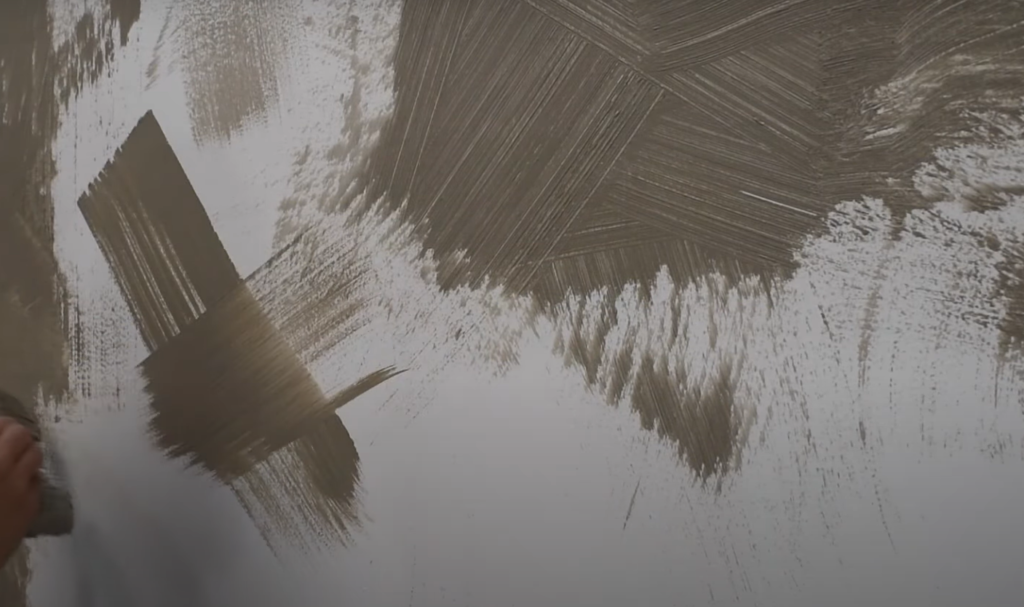
However, in some cases, a sealer can be used to enhance the durability of the finish, increase water repellency, or to provide a sheen if a glossy finish is desired. Remember, if you decide to seal your limewashed surface, it’s essential to choose a product specifically designed for use with limewash. Always follow the manufacturer’s instructions for best results. Be aware that applying a sealer may change the appearance of the limewash, potentially darkening the color or increasing the gloss level, so always test on an inconspicuous area first.
Does limewash lighten as it dries?
Yes, limewash does tend to lighten as it dries. The initial application may appear darker, but as the lime wash dries and reacts with the carbon dioxide in the air, a process known as carbonation, it begins to lighten and harden, achieving its final color. This color change can be quite dramatic, so don’t be alarmed if the initial color seems too dark. Always remember to allow for this lightening process when choosing your limewash color.
Why limewash instead of paint?
There are several reasons why one might choose limewash over traditional paint. Firstly, limewash, made from slaked lime and water, is a natural product that is eco-friendly and non-toxic, making it a healthier choice for both the environment and the home. Secondly, it is known for its unique, breathable properties, which can help prevent moisture buildup and subsequently deter the growth of mold. Thirdly, unlike paint, limewash has a distinctive, rustic look that becomes more beautifully worn over time, adding character and charm to the surface. Moreover, limewash is also highly durable and can last for decades without extensive maintenance, which can result in long-term cost savings. Lastly, limewash is user-friendly and easy to work with, making it a popular choice among DIY enthusiasts.
Is limewash permanent?
Limewash is considered a semi-permanent finish, known for its remarkable durability and longevity. As a mineral-based paint, it adheres powerfully to masonry surfaces, creating a hard, protective layer that can last for decades. However, while it is highly resistant to peeling and chipping, limewash naturally wears away over time, slowly fading and developing a patina that many find aesthetically appealing. This weathering process contributes to the belief that limewash is not entirely permanent, as its appearance will change over time. It’s important to note that the longevity of limewash can be influenced by several factors including the quality of the application, the condition of the surface, and the exposure to environmental conditions. But with proper maintenance, a limewashed surface can retain its charm for many years.
Does vinegar remove limewash?
Yes, vinegar can be used to remove limewash due to its acidic properties. However, it may require a substantial amount of effort and multiple applications. It’s important to note that this method might be less effective on old limewash or on layers that have been built up over time. The process typically involves applying white vinegar diluted with water directly to the limewashed surface, allowing it to soak in, and then scrubbing the surface with a stiff-bristled brush. Protective gear should be worn during this process, as vinegar can irritate the skin and eyes. Additionally, care should be taken around plants or other surfaces that may be sensitive to vinegar. Always rinse the surface thoroughly with water after the vinegar treatment to neutralize the acidity. Please note that the success of this method can vary, and it may not be suitable for all surfaces or situations.
Useful Video: Everything You Need to Know: Limewash Paint – A Beginner’s Guide + DIY Tutorial for Interior Walls
Conclusion
In conclusion, while both conventional paint and limewash have their unique selling points, limewash stands out due to its eco-friendly nature, breathability, durability, and distinctive aesthetic appeal. It’s an excellent option for homeowners seeking a rustic, natural look that evolves. However, the choice between limewash and paint ultimately depends on your specific needs, preferences, and the nature of the surface you’re dealing with. If you decide to use limewash, ensure you follow the recommended application methods and consider factors such as its tendency to lighten as it dries and the potential need for a sealer. Remember, while limewash is semi-permanent and durable, it will naturally wear and change over time, adding to its charm. If you ever need to remove it, vinegar can be used, although this process may be laborious and not always fully effective on older, multiple layers. Always follow safety precautions during the removal process.
References:
- https://jamesalexanderlimewash.com/blogs/news/can-i-paint-over-limewash#:~:text=So%20yes%2C%20you%20can%20repaint,any%20loose%20paint%20or%20debris.
- https://www.diygeeks.com/paint-over-limewash/
- https://paintanalyzer.com/can-you-paint-over-limewash/#google_vignette
- https://www.rawlinspaints.com/blog/how-to-paint-limewash-distemper-walls/
- https://farmhousefinishes.net/limewash-paint-faqs/


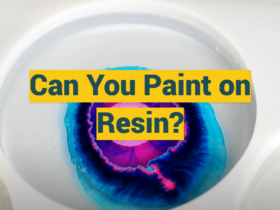

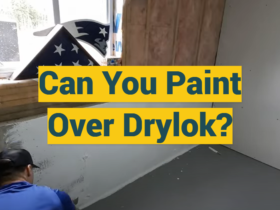
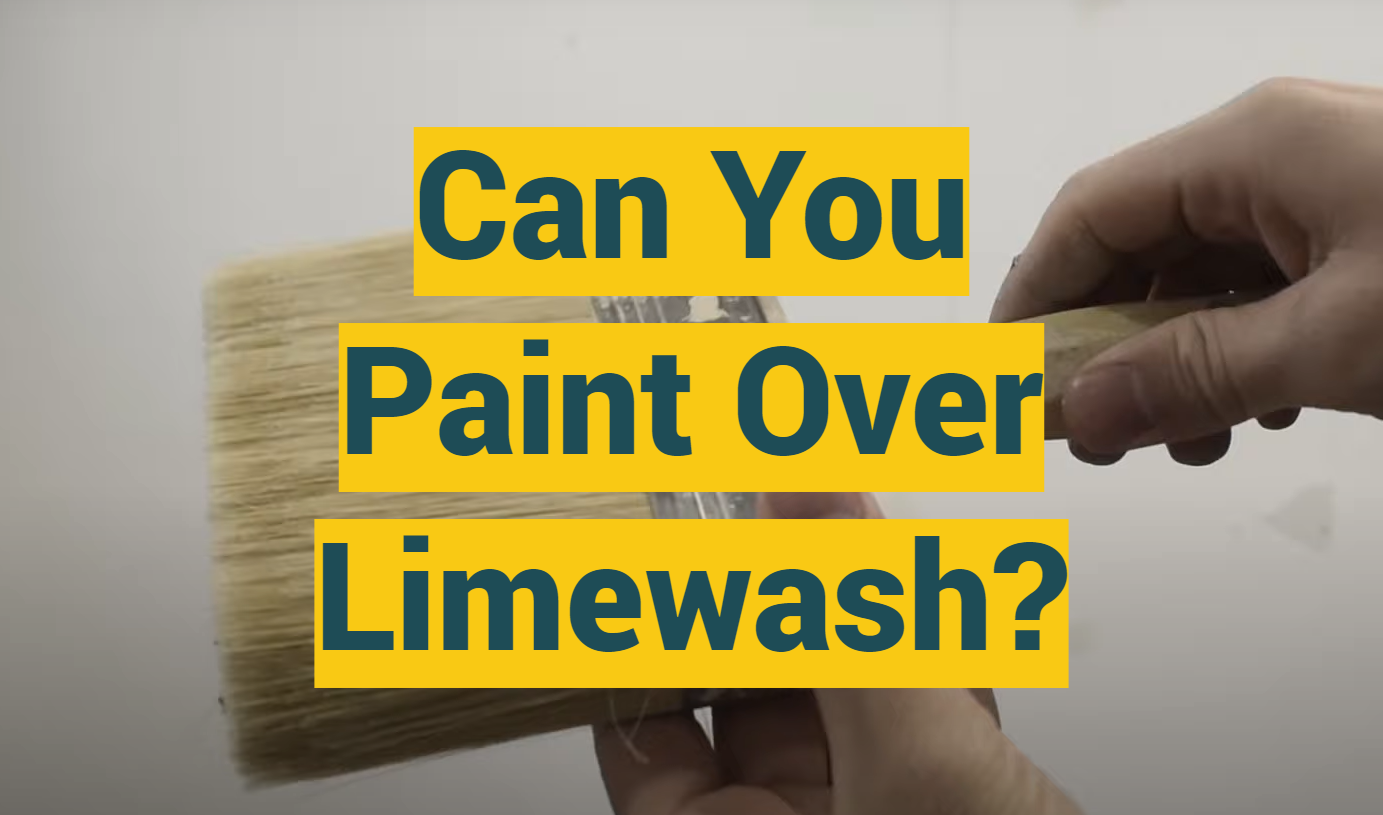




Leave a Review